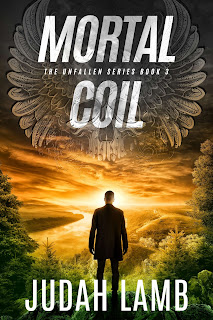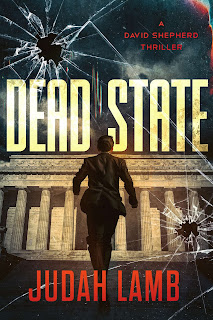Thursday, June 23, 2016
Virtual Book Tour + #Giveaway: Homicide in the House by Colleen J. Shogan @cshogan276 @GoddessFish
Homicide in the House
by Colleen
J. Shogan
GENRE: Cozy
Mystery
BLURB:
During
a government shutdown, Kit’s congresswoman boss is found standing over the dead
body of a top staffer she tangled with in front of the press. The police are
about to name her as the prime suspect. The weapon was the Speaker’s gavel, an
item entrusted to the congresswoman the previous night. The killer knows Kit is
on the case. Can she solve the mystery in time to save her job and her life?
EXCERPT:
Smartphones are great time wasters.
I fiddled with various apps as I waited. The next level of “Angry Birds” was
within my grasp when I heard footsteps and voices across the hallway. I got up
and stood in the doorway to greet my boss.
From the look on her face, she was
not pleased. She charged like a linebacker to the exit of the Speaker’s lair
with Jack Drysdale on her heels.
“Stop, Congresswoman Dixon. You’re
not listening to reason!” From behind, Drysdale placed his hand on Maeve’s left
shoulder in an attempt to prevent her from leaving the suite.
Maeve had impressive reflexes. She
turned her body toward him and grabbed his wrist with her right hand. “Don’t
touch me! Is this how the Speaker’s staff treat members of the House?” Her
voice was loud and filled with vitriol.
The gaggle of reporters who had been
relaxing inside the anteroom trailed behind me. This was better than a boring
pen and pad session. One of them murmured, “I think that’s Dixon from North
Carolina.”
This was not a good development, but
Maeve didn’t know that the press had a front row seat to her implosion.
Maeve clutched Drysdale’s wrist for
several seconds until she let it go. Apparently her physical assault didn’t
intimidate him. He ran ahead and stopped directly in front of her.
Stretching his arms out wide to slow
her down, Jack made his last stand. “I apologize. I shouldn’t have done that.
Please come back in the office so we can sort this out. You’re a valuable part
of this caucus and the Speaker wants to work with you on this deal.”
Maeve shook her head. “You guys in
House leadership are typical politicians. You can’t take no for an answer. I’m
not ready to make a decision. Now get out of my way.”
Unmoving, Drysdale locked eyes with
Maeve. She didn’t look away and squared her shoulders. I could almost feel the
tension around me as the reporters anxiously waited for the outcome. What was
Maeve going to do? Knee him in the groin if he didn’t back down?
After a moment that seemed like an
eternity, Drysdale gave in and stepped aside. I breathed a deep sigh of relief
and hurried into the hallway to catch up with her. As we exited the corridor, I
glanced back to the doorway where I’d been standing. Every reporter was on his
or her phone, ostensibly calling in the most salacious story of the shutdown
thus far. A junior member of Congress and the Speaker’s top aide had nearly
come to blows in the Capitol. A high school reporter could make that story fly.
Guest Post:
The Writing Process of a Moonlighting
Novelist
No matter if I’m talking
about the Washington Whodunit series at a bookstore or on a panel at a
festival, I’m often asked how I find the time to write novels. The short answer
is the one Jim Lehrer often provides: “Butt in seat.” In other words, the only
way to publish books is to devote significant time to writing them.
However, most readers who ask
the question don’t want a glib answer. They really want to know about the
writing process itself. In a nutshell, here’s a brief description of my
methodology.
I begin with a premise. In a
few sentences, what is this story about? What happens to whom? For example, in
my first book Stabbing in the Senate,
the premise was: “A congressional staffer arrives early to work on morning and
discovers her boss has been murdered. She’s immediately named the prime suspect
and has to find the real killer to clear her name.”
After I have the premise,
then I work on developing the characters. In my series, I have four recurring
characters that drive the action. How will they help solve the mystery? What
other characters can I create to support the action and interact with Kit,
Doug, Meg, and Trevor?
The characters help me figure
out a general arc of the story. I don’t write a detailed scene-by-scene
outline, but I do try to come up with a general sequence to ensure the story
develops. This helps with pacing. If there’s not important information revealed
throughout the novel, the reader’s interest can wane. At a writers’ workshop I
attended earlier this year, crime novelist Laura Lippman described the middle
chapters as “where stories go to die.” She’s absolutely correct. Writers need
to figure out how to keep and hold a reader’s interest.
Once I’m satisfied I have a
good story to tell, then I start writing. Because I work a full-time job at the
Library of Congress, progress on my novels moves slowly. Most weekdays, I write
for an hour in the evenings. On the weekends, I usually squeeze in longer
sessions. It will take me seven or eight months to produce a first draft. Some
authors say most novels should be written in half that amount of time. I think
that’s a luxury enjoyed largely by those who can devote all their energy to
writing.
Because I’ve followed my
outline during the actual writing, my subsequent drafts require considerably
less time. Yes, scenes are added and others are deleted or changed. But the
sequence of the story works at this point, so drastic edits are not needed or
desirable.
Of course, pesky little problems
do present themselves, and those glitches need to be fixed. Mysteries must be
tightly written. Everything doesn’t have to twist and turn on a dime, but the
logic of the solution need to make plausible sense. I spend a lot of time with
the second and third drafts thinking about how careful readers might find flaws
or inconsistencies. An additional clue
or red herring might make the story more enjoyable or robust, for example.
Even when a draft of the
novel is delivered to my publisher, the work does not stop. Editors read the
book several times. The first read examines the basics of the storyline. The
second read might be a careful line-by-line edit. The third read makes sure the
changes to the story have been executed properly. A fourth edit, usually done
by someone who hasn’t read the novel previously, provides yet another check for
consistency, flow, grammar, and typos.
There’s one last challenging
aspect of the process. When sequential drafts are completed on a novel, I’m
usually ensconced in writing my next book. Then I need to make certain I keep
my stories straight!
AUTHOR BIO:
Colleen J. Shogan has been reading mysteries since the age of six.
She writes the Washington Whodunit series published by Camel Press. A political
scientist by training, Colleen has taught American politics at Yale, George
Mason University, Georgetown, and Penn. She previously worked on Capitol Hill as
a legislative staffer in the United States Senate and as the Deputy Director of
the Congressional Research Service. She is currently a senior executive at the
Library of Congress. Colleen lives in Arlington, Virginia with her husband Rob
and their beagle mutt Conan.
Giveaway:
$50 Amazon or B/N GC
Follow the tour and comment; the more you comment, the better your chances of winning.
Subscribe to:
Post Comments (Atom)






















































































































11 comments:
A great Guest Post.
Congrats on the Blog Tour; the novel looks great, and thanks for the chance to win :)
Really enjoying the book tour! Great excerpt and guest post. Thank you for the giveaway! :)
It's a fun interview!
--Trix
Great post - I loved the excerpt :)
Sounds like a great read.
Thanks for reading!
I have added this to my TBR list and can't wait to read it.
I'm running late today but still wanting to stop by to thank you for the chance to win
GOOD LUCK WITH YOUR BOOK! THANKS FOR THE GIVEAWAY! SHELLEY S. calicolady60@hotmail.com
Congrats on the new book and good luck on the book tour!
Post a Comment